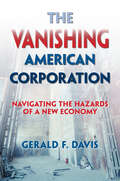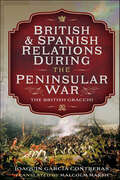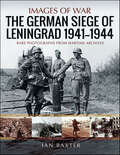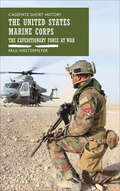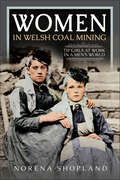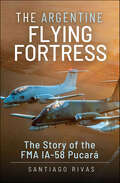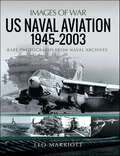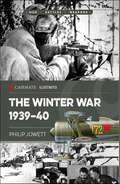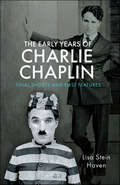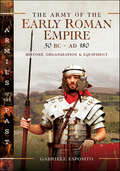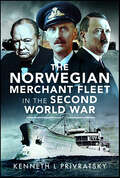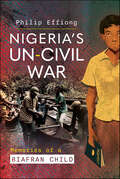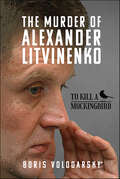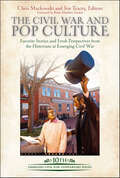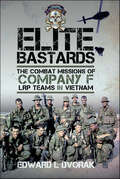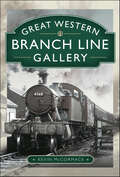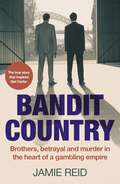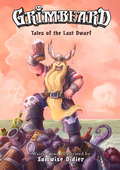- Table View
- List View
Magical Moments: Discover How to Easily Create More in Your Daily Life
by Deborah Borgen Kim BjørnqvistGet in touch with your hidden gifts, rid yourself of worry and stress, and change your life for the better with this inspirational guide. A near-death experiences revealed to Deborah Borgen that humans have many unused resources within. In Magic Moments, she shares how anyone can access these enormous, hidden possibilities that we all contain. She offers a step-by-step manual anyone can use to access their innate resources. Also included are simple exercises and techniques for creating a smooth flow in your daily life. By implementing the steps in this guide, you will soon see the importance of having life visions to stretch towards. Your gut feelings and creativity will be enhanced, giving you creative solutions to life&’s challenges. And you will experience the joy of a new consciousness that will create more magical moments.
The Vanishing American Corporation: Navigating the Hazards of a New Economy
by Gerald F. DavisIt may be hard to believe in an era of Walmart, Citizens United, and the Koch brothers, but corporations are on the decline. The number of American companies listed on the stock market dropped by half between 1996 and 2012. In recent years we've seen some of the most storied corporations go bankrupt (General Motors, Chrysler, Eastman Kodak) or disappear entirely (Bethlehem Steel, Lehman Brothers, Borders). Gerald Davis argues this is a root cause of the income inequality and social instability we face today. Corporations were once an integral part of building the middle class. He points out that in their heyday they offered millions of people lifetime employment, a stable career path, health insurance, and retirement pensions. They were like small private welfare states. The businesses that are replacing them will not fill the same role. For one thing, they employ far fewer people—the combined global workforces of Facebook, Yelp, Zynga, LinkedIn, Zillow, Tableau, Zulily, and Box are smaller than the number of people who lost their jobs when Circuit City was liquidated in 2009. And in the “sharing economy,” companies have no obligation to most of the people who work for them—at the end of 2014 Uber had over 160,000 “driver-partners” in the United States but recognized only about 2,000 people as actual employees.Davis tracks the rise of the large American corporation and the economic, social, and technological developments that have led to its decline. The future could see either increasing economic polarization, as careers turn into jobs and jobs turn into tasks, or a more democratic economy built from the grass roots. It's up to us.
British and Spanish Relations During the Peninsular War: The British Gracchi
by Joaquin García ContrerasThe Spanish Peninsular War (1808–1814), which saw open confrontation between the Spanish people together with their British and Portuguese allies against Napoleon, was more than just a war of occupation and national liberation. Remembered for its violence and drama, it was unusual given that two countries who had traditionally been allies, France and Spain, entered into armed conflict without their governments declaring war. Histories and memoirs drafted since then in France, England or Spain show clear bias in their interpretations, hence the difficulty in finding reliable information to draft a rigorous analysis of those historic events. However, two centuries having elapsed since the start of this conflict allow us to address the topic today with greater objectivity. At the start of the war, the climate in London was favorable to cooperation with Spain. Yet the feeling of failure soon took hold of British society due to having embarked in another long and costly war, and many felt disappointment with the scarce cooperation of Spanish troops. However, among the few who defended the importance of the Spanish cause were the Wellesley brothers, the 'British Gracchi', who together maintained this fragile alliance between both countries until the final victory over the French. Richard, the eldest brother and Minister of Foreign Affairs for the United Kingdom, changed the war against France and was decisive in the success on the Iberian Peninsula. Beside him, his younger brother Henry coordinated official relations between Britain and Spain in his role as ambassador plenipotentiary in Cádiz, maintaining a climate of collaboration up to the end of the war. But the efforts of the two brothers would not have borne fruit without the intervention of a third, Arthur Wellesley (Duke of Wellington), who, in a five-year campaign defeated the French troops which outnumbered his, liberating Portugal and Spain from Napoleon’s grip. The same man who in 1815 commanded one of the allied armies which came together to defeat Napoleon at Waterloo. Based on original sources, this book aims to clarify the setting in which these important events for the history of Spain unraveled, through the study of anglo-hispanic relations during the years of conflict.
The German Siege of Leningrad, 1941–1944 (Images of War)
by Ian BaxterDrawing on a superb collection of rare and unpublished photographs with detailed captions and explanatory text, this dramatic book vividly portrays every aspect of the siege of Leningrad. The historic 872 day siege of Leningrad by German Army Group North began in earnest on 8 September 1941 and was not lifted until 27 January 1944. During this period the Red Army made numerous desperate attempts to break the blockade, which the Nazis and their Spanish and Finnish allies doggedly resisted. Eventually, due to overwhelming enemy pressure, Hitler’s forces were compelled to retreat, but not before looting and destroying numerous historic palaces and landmarks and looting their priceless art collections. The bitter and prolonged fighting often under appalling climatic conditions resulted in many thousands of casualties for both sides from direct action and constant indirect artillery and air attack. Arguably most shocking was the loss of life due to the systematic starvation of the civilian population trapped inside and the intentional destruction of its buildings. Drawing on a superb collection of rare and unpublished photographs with detailed captions and explanatory text, this dramatic book vividly portrays every aspect of the siege which has the dubious claim of being arguably the most costly in human and material terms of any in recent military history.
The United States Marine Corps: The Expeditionary Force at War (Casemate Short History)
by Paul WestermeyerA concise overview of USMC history from an award-winning author, including photos and a timeline: &“Educational and enjoyable.&” —Booklist Many think of the United States Marine Corps as a second land army, and while it has been employed in that capacity, it is foremost a naval expeditionary force able to seize, secure, and defend advanced naval bases in support of major campaigns. The Corps dates back to the Revolutionary War, but while they served in the conflicts of the nineteenth century, they are famed for their part in the wars of the twentieth century. On the Western Front in World War I they were blooded at Belleau Wood. Between the wars the Corps developed amphibious tactics that were employed to great effect during the Pacific island campaigns during World War II, including the infamous battles of Peleliu, Iwo Jima, and Okinawa. The name of the Corps is forever entwined with the battles of Inchon and Chosin Reservoir in Korea, and Hue and Khe Sanh in Vietnam. The US Marines have continued their expeditionary role to this day, undertaking not only combat operations but also peacekeeping, peace enforcement, humanitarian relief, and short-notification/limited-duration contingency operations. This short history charts the evolution of the Corps as it has adapted to changing combat over two centuries.
Women in Welsh Coal Mining: Tip Girls at Work in a Men’s World
by Norena ShoplandWe tend to think of coal mining as predominantly a male occupation, with women confined to roles as wives and support workers. Women worked at the coal face for many years before they were banned in 1842. However, mere legislation was not going to stop them - many continued to work underground, with mine owners making little attempt to stop them due to the low wages paid to women. Some would dress and pass as men to fool visiting inspectors. For the majority though, they worked on the pit brow where they received the coal, cleaned, sorted and cut it to uniform size. Dirty, laborious work, including many accidents and deaths, done by women and girls, some as young as 10 years old. Society was appalled, and harshly criticized women (but not men) for working in such environments and so close to male workers. Find a respectable job, like domestic service, they were told - despite the fact that few jobs for women were available in such industrialized areas. Like the more famous Pit Brow Lasses of Lancashire, the Tip Girls were castigated for having ‘unsexed’ themselves, accused of immorality, of being unfit wives and mothers and society went on a mission to save them. But the Tip Girls did not want to be saved. For nearly a hundred years, these women fought society and Parliament to keep their jobs and clear their reputations. Norena Shopland tells their story for the first time. New research from census returns and newspaper accounts have uncovered over 1,500 named women who worked in the Welsh coalfields – only a few could be included in this book - but it shows how much more work is needed in order for us to continue to celebrate these remarkable women.
The Argentine Flying Fortress: The Story of the FMA IA-58 Pucará
by Santiago RivasIn the 1960’s guerrillas were operating in almost all Latin American countries, as well as in Africa and Asia, and the need of specialized weapons to fight them arose. The Argentine Air Force, seeing this threat grow, asked the FMA factory to produce a counterinsurgency airplane to equip the force, but also to offer on the international market. After several proposals were analyzed, a final product emerged, called the IA-58 Pucará, a robust twin turboprop aircraft with heavy internal weapons, planned to operate from unprepared airstrips on very hard conditions. The plane entered service with the Argentine Air Force in 1975 and more than 100 were produced over the years, with several versions being developed or proposed. It was purchased by Uruguay, Colombia and Sri Lanka, the type gained world notoriety when they took part on the 1982 South Atlantic war, but also had combat experience in Colombia and Sri Lanka, and was tested by the Royal Air Force. Now, with the original version already retired, the Argentine Air Force plans to convert them into the Pucará Fénix version, with new engines and avionics, with new missions too, like intelligence, surveillance and reconnaissance. While some aspects of its story were described in many publications, most of it has never been told until now, including many unknown proposed versions and details of its operational record, both in Argentina and in the other countries that operated the plane.
US Naval Aviation, 1945–2003 (Images of War)
by Leo MarriottIn this the highly illustrated second volume of his history of US naval aviation, Leo Marriott takes the reader through the extraordinary developments in design and capability that transformed American aircraft and aircraft carriers after the Second World War, and he describes the succession of conflicts in which they were deployed. Increasingly, advanced jets replaced propeller-driven aircraft and nuclearpowered carriers allowed the US Navy to project American military power across the world. As the many remarkable photographs in this book show, wherever naval aviation was involved, it played a crucial role, especially in the wars in Korea and Vietnam. The vessels built in the 1940s to fight in the war against Japan gave way to a new generation of super carriers. Supersonic fighters and strike aircraft entered service – the F-8 Crusaders and F-4 Phantoms of the Vietnam era, then the F-14 Tomcat, F/A-18 Hornet and S-3 Viking of more recent times. Carrier-based helicopters became more important, first for search-and-rescue missions, then for anti-submarine warfare and for landing assault forces. Throughout this period of the Cold War the US Navy’s carriers and aviation served to demonstrate American power worldwide and to counter the threat represented by the Soviet Union’s challenge to US mastery of the seas.
Beyond My Yesterdays: A Woman's Journey from Darkness to Light
by Jeannie KeneleyA faith-based journey of the heart as a woman seeks healing from a troubled past by looking to one of the Bible&’s most misunderstood characters. While many have written about healing in the aftermath of divorce, few have opened their hearts as fully as Jeannie Keneley does in Beyond My Yesterdays. With generosity and candor, Jeannie gives us insight into her private world of devastation and hope in the process of healing from abuse, betrayal, and abandonment. A successful entrepreneur who built and sold four interior design businesses over the course of her career, Jeannie is now a full-time Christian author and speaker with a passionate heart for those who hurt, and an encouraging message for those who finds themselves lonely and lost in life. For at the same time Jeannie was reaching the heights of professional success, she kept making wrong turns in her search for personal happiness. After three destructive marriages and divorces, Jeannie finally came to the end of her &“dark night of the soul&” and found her answers in the arms of her Creator. In Beyond My Yesterdays, Jeannie explores the biblical story of the Woman at the Well. She shares a story of two women separated by two thousand years, yet intrinsically bonded by one shared experience. As we look at these women, our eyes are opened to new insights and truths of the magnificent power of healing through God&’s amazing grace.
Planting with Nature: A Guide to Sustainable Gardening
by Kirsty WilsonBy re-imagining how we plan and use our gardens, we can all do our bit to support local wildlife, improve our health and help tackle the climate crisis. Positive steps, no matter how small, can really make a difference. This is a practical, easy-to-use guide for anyone who wants to boost nature in their patch and make the world a little greener. Illustrated with specially commissioned drawings, it contains essential information on many topics, from planting nectar-rich borders, native hedgerows, trees and wildflower meadows to creating rain gardens, green roofs and ponds. These activities, together with providing homes and feeders for birds, mammals, amphibians, bees and other insects, will encourage many kinds of native wildlife to thrive in your garden, whatever its size. Expert advice is also provided on sustainable gardening approaches to fruit and vegetable production, making compost and the propagation of new plants.
The Winter War 1939–40 (Casemate Illustrated)
by Philip Jowett"Jowett has amassed an impressive amount of detail, yet the writing never bogs down. He leads the reader through this war with precision and employs images to great effect." — New York Journal of Books When the Soviet Union invaded Finland in late 1939, what transpired was a true “David and Goliath” conflict. When Finland refused a number of Soviet demands, including the ceding of substantial border territories ostensibly to enable the Soviets to protect Leningrad, the Soviets responded by launching an invasion. The invasion involved a large Soviet army, with several thousand tanks, and a large air force. But to the world's surprise the Finnish Army—many of them reservists without proper uniforms and limited ammunition—and Air Force battled overwhelming odds, and managed to resist Russian attacks for over two months, inflicting serious losses. Geography played its part as much of the Finnish-Soviet border was impassable, meaning that Soviet numerical superiority was of less import. Operating in the winter, with temperatures ranging as low as -43F, the Finns’ determined resistance won them international reputation. Although hostilities finally ended in a peace treaty that saw Finland cede 9% of its territory, Soviet losses had been heavy, and Finland retained its sovereignty. This fully illustrated text will cover the forces involved and all stages of the Winter War.
Crochet Home: 20 Vintage Modern Crochet Projects for the Home
by Emma LambTransform your home with this collection of retro-chic patterns from the experienced crochet designer and blogger! Choose from twenty patterns to prettify your home, such as quick-to-stitch gorgeous flower garlands, vintage-inspired blankets and throws, and delightful doilies and cushions. Whether you&’re new to crochet or an experienced stitcher looking for wonderful new project ideas, this book is sure to appeal. Emma Lamb&’s technique for combining colors and subtle but stunning designs makes these projects truly stand out.Includes techniques and crochet charts as well crochet patterns
The Early Years of Charlie Chaplin: Final Shorts and First Features
by Lisa Stein HavenA thorough look into the early life and career of Charlie Chaplin. Charlie Chaplin’s career has been described, critiqued, and scrutinized. There are book-length studies on Chaplin’s music hall career, his career at Keystone Studios and the Mutual Studios. Somehow, his tenure with First National studios, however, has been largely neglected, even though it was during this several-year contractual time period that Chaplin built and occupied his own studio for the first time, that he attempted and succeeded in filming a comedy feature (The Kid) and that he helped to set up United Artists, an organization that protected the salaries and creative freedom of actors in Hollywood. This period in Chaplin’s story is especially interesting because such landmark moments are accompanied by Chaplin’s first marriage and divorce, the death of his first child, his friendship with French silent film comedian Max Linder, World War I and the role he would play in it, and the production and release of several unsuccessful films that marked Chaplin’s first creative blockage - one that threatened his future career. This book will discuss the transitional periods just before and after the First National contract, as well as the all-important period satisfying it. Archival evidence provides most of the support for the book’s assertions, from the Chaplin archive (property of Roy Export, digitized by Cineteca di Bologna, Italy), and the personal archives of other individuals or institutions discussed. Rare photos will illustrate the story.
The Army of the Early Roman Empire 30 BC–AD 180: History, Organization & Equipment
by Gabriele EspositoThe legionary soldier of the early Empire period, with his distinctive segmented armor, is one of the images most closely associated by popular imagination with ancient Rome. Such soldiers conquered most of Britain, suffered and avenged the terrible disaster of the Teutoburg Forest and vanquished the fearsome Dacians across the Danube, a feat immortalized on Trajan’s Column, as well as fighting many other tribes. In the East they overcame the Great Jewish Revolt and repeatedly contended with mixed success against the powerful Parthians. This was the army that enforced the so-called Pax Romana at the point of a gladius and maintained the greatest empire the world had yet seen. Of course, such troops were also employed to bloody effect in the many civil wars such as those of AD69, ‘the Year of the Four of the Emperors’. Gabriele Esposito describes the tactics, organization and equipment of the Roman army at the height of its powers, considered by many to be the most efficient and powerful fighting force of the ancient world. He gives an overview of the most significant campaigns and considers in detail not only the iconic legionaries but also the various auxiliary units, including cavalry. His clear, accessible text is supported by dozens of color photos of replica weapons, armor and other kit in use.
The Norwegian Merchant Fleet in the Second World War
by Kenneth L. PrivratskyAt the outbreak of the Second World War, Britain, desperately short of merchant shipping, turned to the Norwegians who agreed to loan several hundred of its modern cargo and tanker ships. In early 1940 when Hitler invaded Norway, both the British and Germans rushed to seize the remainder of the fleet. King Haakon VII and his government, now fleeing from Nazi occupation, refused to relinquish control of this vital national asset. Instead, they nationalized the fleet and established the Norwegian Shipping and Trade Mission. Nicknamed Nortraship, it became overnight the largest shipping company the world had seen with a thousand ships and offices on six continents. Generously made available to Great Britain, it became a priceless Allied asset without which victory over Germany would arguably have been impossible. By the end of the war, about half Nortraship’s fleet had been lost to enemy action. The Norwegian Merchant Fleet in the Second World War is a superbly researched addition to Second World War history being the first detailed account in English of Norway’s critical contribution to the Allies. As well as telling this little-known but hugely significant story, the author covers the controversies that developed and persist into the present day.
Nigeria's Un-Civil War: Memories of a Biafran Child
by Philip Effiong"The peace had been desecrated. I knew because people spoke in low tones and laughter dried up. Outside, things unfolded without grace or color, even the harmattan leaves were more skeletal than usual. The sun still shone but didn’t smile; it was as if it could tell that the worst was yet to come. Change should not have been bad, but this one was heavy and stubborn. Months later I learned about the 15 January 1966 coup d’état." In Nigeria’s un-Civil War: Memories of a Biafran Child, Philip Effiong reveals the many characters of war: the horror and the chaos, the surrealism and the absurdity and the desperate need to conjure a semblance of normalcy against a backdrop of air raids, starvation and massacre. This is his, and his family’s, story before, during and after the Biafra–Nigeria War of July 1967 to January 1970. He begins in Lagos with the January 1966 coup and describes his high-ranking military father’s narrow assassination escape at the hands of the executors of the second coup six months later. Flight and relocation dog the next three-and-a-half years as his family tries to maintain a sense of stability amid crumbling education, health services and failing infrastructure. Lessons in literacy and numeracy are exchanged for creativity in foraging as food becomes ever scarcer. Death, fear, destitution and the madness in which the family repeatedly finds itself are told obliquely through a child’s eyes and leave the reader gutted by the senselessness and cruelty of war, yet equally buoyed by the resilience of the Biafran people’s inextinguishable hope.
The Murder of Alexander Litvinenko: To Kill a Mockingbird
by Boris VolodarskyIn his famous Moonlight and Vodka, Chris de Burgh got it right: Espionage is a serious business. And like every serious business, it must be taken seriously. Less than two decades after the untimely death of Sasha Litvinenko, poisoned at the heart of London’s Mayfair by Russian secret agents by the previously unknown radioactive substance containing a fatal dose of Polonium-210, it is hardly remembered by anyone in the West. No wonder, we live in an information-rich world when the wealth of information means a dearth of something else: a scarcity of whatever it is that information consumes. Such an obvious thing was suddenly discovered by a simple old man from Milwaukee, and he’s got a point there. This book is about the murder of Alexander Litvinenko, whose legal case seems to many people like open-and-shut. Even to his widow Marina and their son. To MI6, MI5 and the Special Operations branch of the London’s Metropolitan Police who presented it to the public as thoroughly investigated and closed. To judge Sir Robert Owen appointed to hold the inquest “into the death of a Russian Spy” as the BBC and other media has put it – a terrible mistake. To journalists and writers who had been following this case for as long as a decade, not to mention the prime suspect living a good life in Moscow. But not for me. For me this case remains open.
The Civil War and Pop Culture: Favorite Stories and Fresh Perspectives from the Historians of Emerging Civil War (Emerging Civil War Series)
by Chris Mackowski PhD; Jon TraceyExplore the enduring fascination of the Civil War through thought-provoking essays from the esteemed "Emerging Civil War" series to gain better understanding of the complex relationship between history and art in shaping our understanding of the war. The American Civil War left indelible marks on America’s imagination, collectively and as individuals. In the century and a half since the war, musicians have written songs, writers have crafted histories and literature, and filmmakers recreated scenes from the battlefield. Beyond popular media, the battle rages on during sporting events where Civil War-inspired mascots carry on old traditions. The war erupts on tabletops and computer screens as gamers fight the old fights. Elsewhere, men and women dress in uniforms and home-spun clothes to don the mantel of people long gone. Central to “history” is the idea of “story.” Civil War history remains full of stories. They inspire us, they inform us, they educate us, they entertain us. We all have our favorite books, movies, and songs. We all marvel at the spectacle of a reenactment—and flinch with startled delight when the cannons fire. But those stories can fool us, too. Entertainments can seduce us into forgetting the actual history in favor of a more romanticized version or whitewashed memory. The Civil War and Pop Culture: Favorite Stories and Fresh Perspectives from the Historians at Emerging Civil War explores some of the ways people have imagined and re-imaged the war, at the tension between history and art, and how those visions have left lasting marks on American culture. This collection of essays brings together the best scholarship from Emerging Civil War’s blog, symposia, and podcast—all of it revised and updated—coupled with original piece, designed to shed new light and insight on some of the most entertaining, nostalgic, and evocative connections we have to the war.
Elite Bastards: The Combat Missions of Company F, LRP Teams in Vietnam
by Edward L. DvorakThe quintessential first-person combat memoir of a special forces soldier fighting in the jungles of Vietnam. This is the quintessential first-person combat memoir of a special forces soldier at war. Edward Dvorak joined the 173rd Airborne Brigade in Vietnam in the summer of 1967. He then joined Company F, 51st Infantry, Long Range Patrol, Airborne. For Dvorak and his buddies of Company F, LRP, their real training started with the MACV (Military Assistant Command Vietnam) Recondo School at the 5th Special Forces Compound in Nha Trang, South Vietnam. That training culminated with an actual Combat LRP mission. If you lived through the patrol, you graduated. Dvorak would remain with Company F for 19 months going on dozens of combat patrols deep behind enemy lines.
Great Western Branch Line Gallery
by Kevin McCormackThis book is a gallery of more than two hundred photographs, including a color section, featuring a selection of Great Western Railway/British Railways (Western) branch lines and similar services taken between 1900 and 1965. The emphasis is pictorial rather than factual with the aim of using photographs provided by two transport charities as well as the author, all of which are unlikely to have appeared previously in print or on the Internet. Generally, images depict working trains surrounded by recognizable infrastructure, often with station nameboards visible. Such pictures should be of particular interest to railway modelers as well as invoking nostalgia for the older generation who were pursuing their hobby around the time the pictures were taken. Most of the branch lines covered were victims of the 1960s "Beeching Axe", with closure to passengers or complete closure coming even earlier in some cases. Most of the services depicted are steam operated although a few GWR and BR diesel railcars/multiple units are included. All the scenes seem to reflect a more leisurely way of life than exists today.
The DASH Diet Health Plan: Low-Sodium, Low-Fat Recipes to Promote Weight Loss, Lower Blood Pressure, and Help Prevent Diabetes
by Rockridge PressWhile fad diets come and go, the DASH diet is here to stay. Based on research by the National Institutes of Health, and endorsed by top-tier medical institutions like the Mayo Clinic and the American Heart Association, the DASH diet is a scientifically proven method to lose weight and become healthier. With the DASH diet's straightforward approach to reduce sodium and improve overall cardiovascular health, participants have experienced benefits that include lower blood pressure, lower cholesterol levels and a reduced risk of diabetes. In The DASH Diet Health Plan, bestselling health and nutrition author John Chatham compiles the findings of the medical and scientific community into a comprehensive book that makes it easy to put the DASH diet into action. Enjoy the following benefits in this comprehensive guide: * 99 DASH-approved Recipes, ranging from hearty lunches to savory desserts, and all the snacks in between * 147 Dash-approved Foods, ranging from meats and seafood to sweets * The DASH Diet Guide includes tips for navigating your way through the grocery store and helps you start eating a healthy diet * 28-day DASH to Fitness workout plan provides step-by-step exercise routines to accelerate your weight loss and jumpstart your health regimen * 14-day Menu Planner to help you get started Lose weight, improve health and reduce your risk of heart disease with John Chatham's The DASH Diet Health Plan. It's time to DASH to a healthier you.
Bandit Country: Brothers, betrayal, and murder in the heart of a gambling empire
by Jamie ReidA True-Crime Story Set Against the Backdrop of an After-Dark World Filled with New Money, Hedonism, and ExcessGripping, atmospheric, true-crime noir. Bandit Country takes you on a thrilling journey into the shadowy underworld of England’s organized crime. In this atmospheric tale, you are introduced to a cast of characters as diverse as the luxurious nightclubs they frequent: racketeers, gamblers, glamorous women, entrepreneurs, bunny girls, politicians, and policemen. At the heart of the story are the Luvaglio brothers, visionaries who dared to dream of an empire amidst the industrial skylines and bridges of Newcastle.Unfolding like a cinematic thriller.Bandit Country is more than just a true crime story; it's a meticulously researched and emotionally charged portrayal of a bygone era. It delves deep into the heart of the British gambling boom and the forces that shaped it, with a particular focus on the influence of organized crime and the elusive Mafia empire. For fans of true crime biographies, books about the Mafia, gripping suspense, and noir books, Bandit Country offers a unique and captivating narrative that inspired the British classic gangster film, Get Carter.Inside:Discover the secrets of an empire built on ambition and shattered by betrayalExplore the rise of the British gambling industry during the 1960sFind the perfect addition to organized crime books for the true crime obsessedIf you love books about true crime such as The Life We Chose, Five Families, or The Best New True Crime Stories, then Bandit Country is for you.
Undercurrent: Tank Commander Cadet in the Yom Kippur War
by Amir Bega"This fascinating memoir recounts the experience of Amir as a young soldier, caught up in the chaos and violence of the Yom Kippur War of October 1973. It vividly retells the constant fighting through the entire war as the initially overconfident Israeli military learns hard lessons and regains its balance to take the fight to its enemies." — Military Heritage Magazine Tank commander cadet Amir Bega is about to leave training for the Jewish High Holiday of Yom Kippur when a surprise attack on Israel by Egyptian and Syrian forces upends this peaceful reprieve, throwing the teenager into an unexpected war. A war in which the confidence and complacency of the Israeli army led to disaster. Believing himself well-trained and the Israeli army unstoppable, Bega struggles to accept the horrifying events surrounding him. His battalion was annihilated in one of the first combats by new anti-tank weaponry. He survived and joined a reserve unit, with which he fought to stop the Egyptian army from advancing beyond the first line of defense, all through the war’s end. In this realm of death and destruction, Bega comes face to face with the conflicts between the reality of war, his core beliefs, and his basic ideology. As the war progresses, he deals with the horrific losses of both those around him and his own innocence. Tank after tank that he joins is destroyed or damaged, and he is seen as a bad omen by those still alive. Gnawed by survivor guilt, the young soldier agrees to go on a sole perilous mission to rescue an army technical unit surrounded by Egyptian commandos. This captivating first-hand account, as viewed through the eyes of the young soldier, conveys the heavy toll of the Yom Kippur War and its impact on the people of Israel. Ultimately, Undercurrent is a story about survival, friendship, humanity, duty, and honor.
Somewhere In Between: A TRU Journey Through Sex, Drugs, Alcohol & Everything In Between
by Julia GarciaA courageous and honest journal of a young woman&’s life—as she examines the person she was, and the person she aspires to be. Somewhere In Between takes you into the author&’s journey as she travels through the world of sex, drugs, alcohol, and everything in between. It&’s a unique collection of personal stories, journal entries, and powerful, self-expressive photography, which were all created to help her cope with the loss of loved ones, her parents&’ divorce, family addictions, and her own battles with addiction and depression. From the founder of the TRU nonprofit organization and a popular speaker, Somewhere In Between is an inspiring account of the challenging and rewarding search for one&’s own truth, and the quest for healing.
Grimbeard: Tales of the Last Dwarf
by Samwise DidierFrom the visionary Blizzard Entertainment art director, the collected humorous adventures of the brawling, elf-hating, pirate dwarf, Captain Grimbeard.Captain Grimbeard is right ticked off! Our most noble dwarf (and hero of this story) awoke from a night of merriment to find that he had mysteriously traveled one thousand years into the future. On top of that, he also discovered that the world he once knew was now ruled by the most detestable and dandyish of all creatures—those annoying elves. Oh, and did I mention that every dwarf in existence was somehow wiped off the crust of the world by those aforementioned scoundrels? Well, not every dwarf. A collection of bawdy and boisterous short stories featuring all original artwork by legendary Blizzard Entertainment art director Samwise Didier, this tome follows Captain Grimbeard as he organizes underground fight clubs, boxes elven bounty hunters, ducks amorous giants, and most important—searches for a place to empty his beer-filled bladder.Perfect for fans of Adventure Time!“Grimbeard has something for everyone! A lavishly illustrated collection of adventures that is outrageous, irreverent, and quite often, downright enlightening.” —Micky Neilson, bestselling author of Ashbringer and Pearl of Pandaria“Didier has outdone himself with this impressive display of both his artistic and literary skills. I've never been much of a dwarf guy, but the tenacious exploits of Samwise’s endearing Grimbeard has won me over.” —Gerald Brom, award-winning author of Lost Gods

